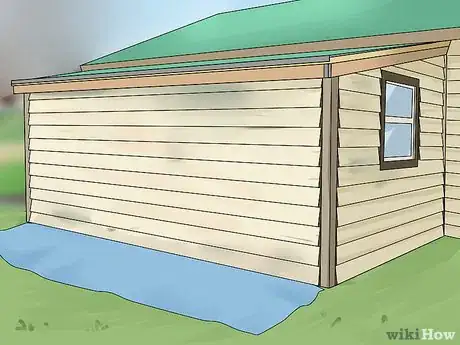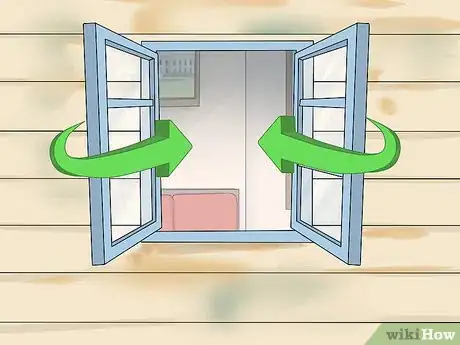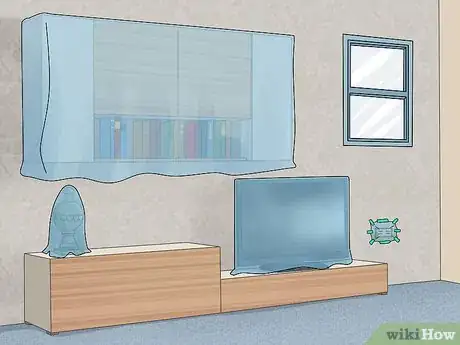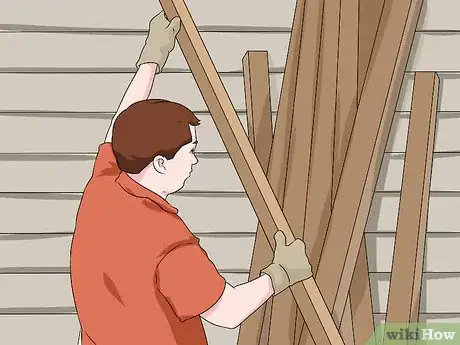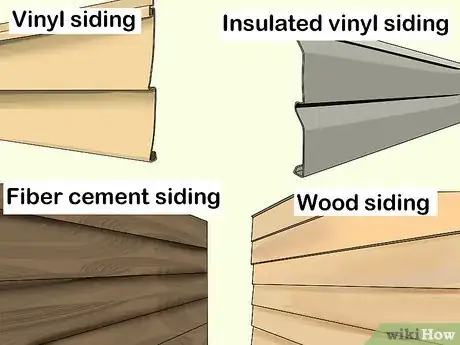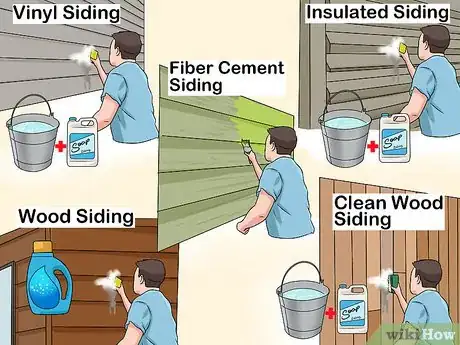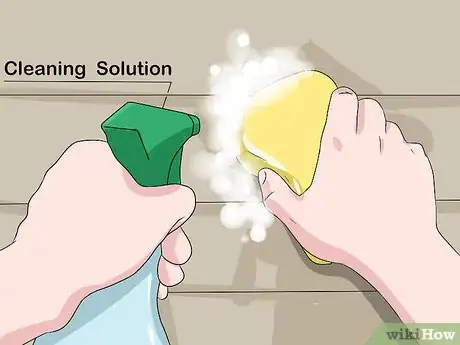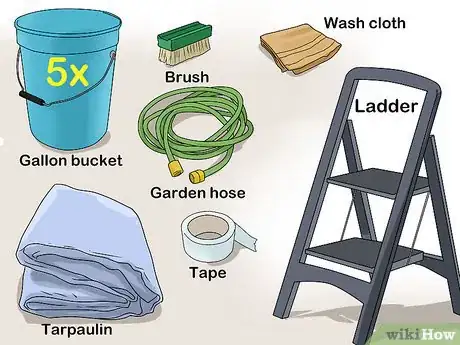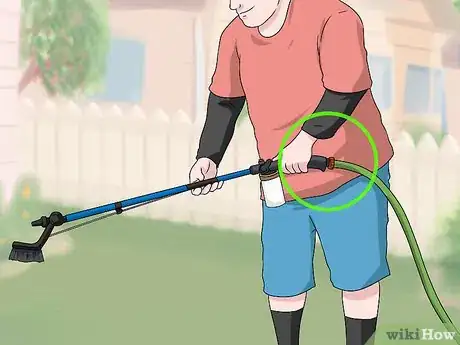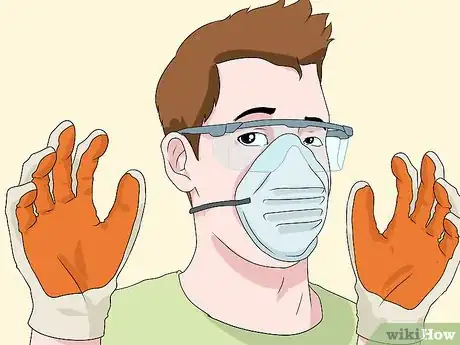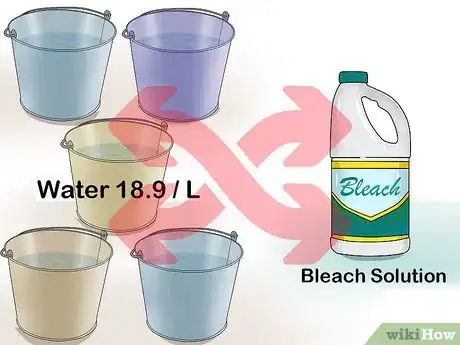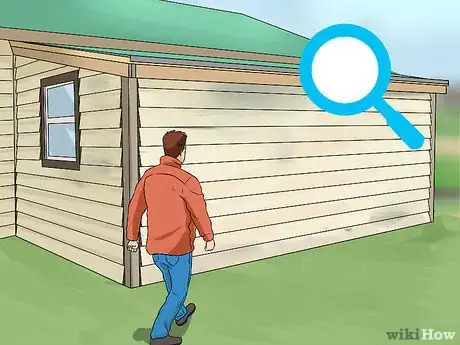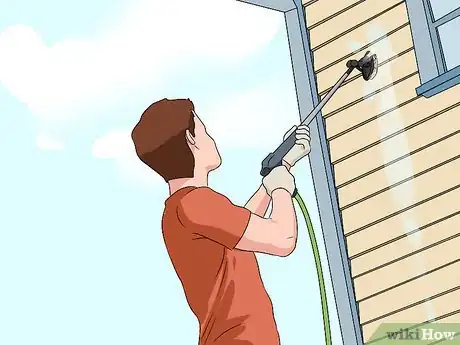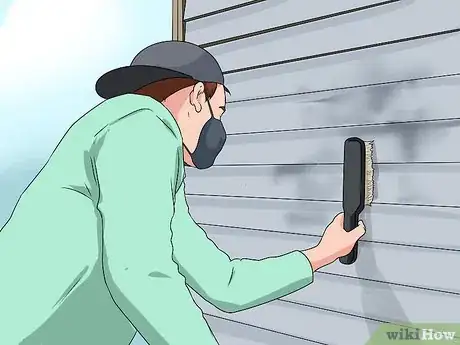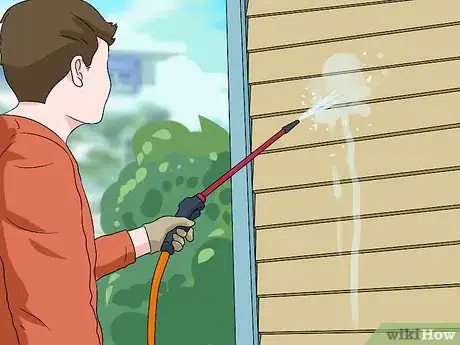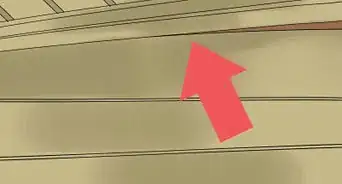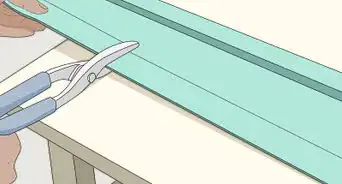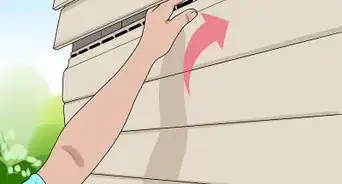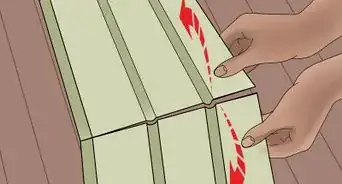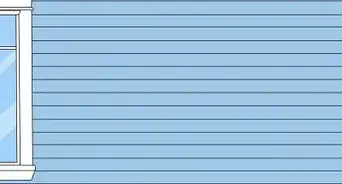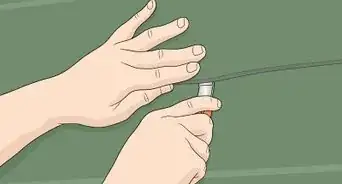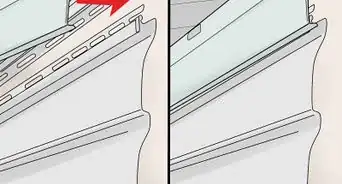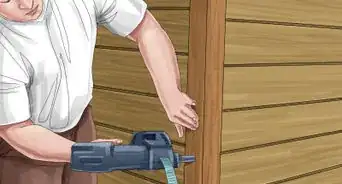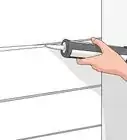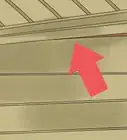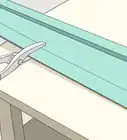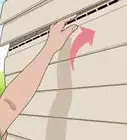This article was co-authored by David Liu. David Liu is a Residential Cleaning Expert at Anita’s Housekeeping Referral Agency. Since 1994, Anita's has been connecting homeowners, renters, and property managers with experienced cleaning professionals who offer deep cleaning, green cleaning, general housekeeping, maid services, post-construction cleaning, and window cleaning. David holds a BS from Carnegie Mellon and an MBA from INSEAD.
There are 10 references cited in this article, which can be found at the bottom of the page.
This article has been viewed 38,816 times.
Cleaning your siding helps your home look great and can extend the life of your siding. If you just moved or have lost your power washer, you may want to clean your siding without a power washer. Cleaning your siding by hand or with an outdoor cleaning wand has the added benefit of greater precision and is better for many types of siding. If you have wood siding, for instance, you should avoid using a power washer and instead clean your siding by hand or with a cleaning wand attached to your garden hose.[1] Depending on the condition of your siding, you can choose between a wide range of cleaning solutions ranging from vinegar to green cleaning products.[2] When you see the exterior of your home look sparkly and new, you will see that cleaning your siding without a power washer is worth the extra effort.
Steps
Protecting Your House and Landscaping
-
1Lay a tarp over your landscaping features. If you have landscaping features around the side of the house that need to be protected during the cleaning process, you can lay a tarp over them.[3]
-
2Close the windows to your house. In order to avoid getting any soapy water into bedrooms or other parts of the house, you should make sure all of the windows are closed.[4]Advertisement
-
3Cover electrical outlets and lights with plastic. You don’t want to get electrical components wet while washing the house, since water and electricity can be a dangerous combination. If there are any electrical components on the side of your house, they should be covered in plastic for the duration of the cleaning process.[5]
-
4Walk around the house to remove any obstacles. Since you will likely be using a ladder and focusing on the side of the house, you want to make sure there are no objects in your way. Remove any debris, logs, or other items from the side of your house so you have access to all of the siding.
-
5Trim trees and bushes that are close to your siding. Trimming these trees will not only remove an obstacle to your cleaning efforts. It will prevent dirt and pollen from accumulating on your siding.
-
6Check the siding manufacturers’ cleaning guidelines.[6] There many types of siding such as vinyl siding, insulated vinyl siding, fiber cement siding, and wood siding. Depending on the type of siding you own and the particular product, you may need to follow very specific maintenance and cleaning guidelines.
-
7Figure out the cleaning guidelines for your type of siding. You should follow the general cleaning and maintenance guidelines for your particular type of siding:
- Wash vinyl siding annually with soap and water. You should avoid pressure washing vinyl siding.[7]
- Wash insulated siding annually with soap and water. You should avoid pressure washing insulated siding.[8]
- Fibre cement siding should be cleaned annually to prevent dirt and mildew from accumulating. It needs to be repainted every fifteen to twenty years.[9]
- Wash engineered wood siding once a year with a mild detergent. You can use a light sandpaper to remove really tough stains on engineered wood siding.[10]
- Clean wood siding once a year with soapy water and a soft bristled brush.[11]
-
8Do a test clean on a small part of your siding.[12] Prior to cleaning the whole exterior of your house, you should check to make sure the cleaning solution that you are using will not damage your siding. Choose a small, one foot square area of siding on your house and clean it thoroughly with the cleaning solution you plan to use for the whole house. Return to the area the next day and check to see if the solution worked and if it had any adverse impact on your siding, such as peeling up the paint or damaging the wood.
Mixing Cleaning Solutions and Getting Your Tools Ready
-
1Get your cleaning equipment together. You will need a five-gallon bucket, a garden hose, a good brush, a wash cloth, a couple tarps, some tape, possibly a ladder and other tools. You will certainly need a bucket to hold the cleaning solution, a hose to rinse off the siding, and a good brush for scrubbing. Make sure you have everything you need before cleaning.
- Attach a long handled brush to a pole to get at the high areas. You can use duck-tape to attach the brush to the pole.
- Use a wire brush to clean tough mildew and stains on fiber cement siding.
- Exercise caution when cleaning wood siding. In particular, you should avoid using too much water pressure since it can get into the joints and you could trigger wood rot.[13] Since you are not using a power washer this should not be a problem, but you want to exercise caution even if using a garden hose or a hose attachment.
-
2Use an outdoor cleaning wand attached to your garden hose. Outdoor cleaning wands have a brush attached to a long pole that connects to your garden hose. They are a great alternative to a power washer and offer more cleaning precision.[14]
- Make sure you have a long garden hose. If you are using a cleaning wand attached to your garden hose, make sure you have a garden hose that will allow you to reach around the entire exterior of your house.
- If you have a two or more story house, you will also likely need a ladder to get at the high parts of your siding. Remember to follow the safety guidelines on the ladder and have someone spot you while you are on it.
-
3Put on your safety equipment. You should wear some protective eyewear and some gloves while cleaning your siding to protect your eyes from debris and keep your hands clean.[15]
- If you anticipate dealing with mold, you should also wear a mask. Find an appropriate respirator mask that has filters to block the mold from entering your lungs. Also, you may want to wear a disposable hair cover to prevent the mold from getting on your hair and skin. If conditions are very bad, you may even need a full body suit designed for mold protection.[16]
-
4Mix your cleaning solution. Using your garden hose, add water to your five-gallon (18.9 L) bucket and then add appropriate cleaning products. Depending on your particular siding and cleaning goals, you may choose a vinegar solution, a bleach solution, oxygen bleach solution, or green cleaning solution. Review possible cleaning solutions below:
- Use a vinegar cleaning solution.[17] Mix 30% white vinegar with 70% water for an all-purpose cleaner that will get rid of light mold and mildew stains on your siding.
- Use a bleach cleaning solution. Mix a third of a cup (78 Milliliters) of powdered laundry detergent, two thirds of a cup (157 Milliliters) of powdered household cleaner, and one quart (946 Milliliters) of laundry bleach in one gallon (3.78 L) of water.
- You can also use a bleach solution to clean mold from vinyl siding. Add one quart (946 Milliliters) of household bleach to a gallon (3.78 L) of water, then add a third of a cup (78 Milliliters) of laundry detergent and two thirds of a cup (157 Milliliters) of trisodium phosphate cleaner.[18]
- Avoid damaging your landscaping by using oxygen bleach. Mix one cup (236 Milliliters) of oxygen bleach into a gallon (3.78 L) of water. The oxygen bleach will not damage your landscaping.
- Use a green cleaning product. Use an environmentally friendly cleaner that is non-toxic and biodegradable so that you can avoid damaging soil in your flower and vegetable beds or on your lawn.[19]
- If the siding is only moderately dirty, you could just use a bucket of soapy water. Add a couple squirts of dish detergent to your five-gallon (18.9 L) bucket of water.
- Use regular household cleaners to get at tough stains on the siding.
- Add a diluted mildew cleaner to your solution for protection against mold.[20]
Scrubbing Your Siding
-
1Inspect your siding to find areas that need more attention. Take a walk around the house and look for parts of the siding that are especially dirty or moldy. Allocate more time for scrubbing these parts of your siding.
-
2Scrub off dirt with a cloth and a bristle brush.[21] Start by applying the cleaning solution to the affected area with the wet cloth. Then, you can scrub the area with a bristle brush or wire brush until it looks clean.
-
3Scrub hard to reach areas with an outdoor cleaning wand. If you need to scrub areas that are very high up, you can use an outdoor cleaning wand extension to your garden hose.
- If you don’t own a cleaning wand, you can attach a scrub brush to a broom stick or hockey stick. Attach the brush to the broom stick with a roll of duck-tape.
- If you don’t own a cleaning wand, you can also use a ladder. Follow the safety recommendations for your ladder and always have someone spotting you.
- Avoid using a ladder with a hose or hose attachments, since this can be very dangerous.[22]
-
4Clean tough stains with a wire brush. If you have areas of your siding that are especially dirty or look moldy, you can use a wire brush.
- Use a wire brush to clean tough mildew and stains on fiber cement siding.
- Wear a mask while scrubbing away mold.
-
5Rinse your siding with a hose or a bucket of water. After you have scrubbed off the dirt, grease, oil, and mold, you will want to remove the soap from the siding. You could spray down the freshly cleaned area with a garden hose or you could use a fresh sponge and a bucket of clean water.
Community Q&A
-
QuestionDo I start at the top or bottom of the wall?
 Community AnswerStart at the top of the wall. Move quickly in order to avoid permanent drip marks running down the wall. Use a fresh, white cotton towel to dry as you go.
Community AnswerStart at the top of the wall. Move quickly in order to avoid permanent drip marks running down the wall. Use a fresh, white cotton towel to dry as you go.
References
- ↑ http://www.bobvila.com/articles/how-to-clean-wood-siding/#.V-rQoJMrIo8
- ↑ http://www.bobvila.com/articles/how-to-clean-vinyl-siding/#.V-rHi5MrIo9
- ↑ https://modernize.com/siding/types/fiber-cement
- ↑ http://www.bobvila.com/articles/how-to-clean-wood-siding/#.V-rQoJMrIo8
- ↑ http://www.bobvila.com/articles/how-to-clean-wood-siding/#.V-rQoJMrIo8
- ↑ http://www.greatdayimprovements.com/how-to-clean-vinyl-siding-without-a-pressure-washer.aspx
- ↑ http://www.bestpickreports.com/blog/post/different-types-of-siding
- ↑ http://www.bestpickreports.com/blog/post/different-types-of-siding
- ↑ http://www.bestpickreports.com/blog/post/different-types-of-siding
- ↑ http://www.bestpickreports.com/blog/post/different-types-of-siding
- ↑ https://www.houselogic.com/organize-maintain/home-maintenance-tips/wood-siding-care-and-maintenance/
- ↑ http://www.greatdayimprovements.com/how-to-clean-vinyl-siding-without-a-pressure-washer.aspx
- ↑ http://www.bobvila.com/articles/how-to-clean-wood-siding/#.V-rQoJMrIo8
- ↑ http://www.bobvila.com/articles/how-to-clean-wood-siding/#.V-rQoJMrIo8
- ↑ https://modernize.com/siding/types/fiber-cement
- ↑ http://www.mold-advisor.com/personal-protection-when-removing-mold.html
- ↑ David Liu. Residential Cleaning Expert. Expert Interview. 3 November 2021.
- ↑ http://www.todayshomeowner.com/how-to-clean-vinyl-siding/
- ↑ http://www.bobvila.com/articles/how-to-clean-vinyl-siding/#.V-rHi5MrIo9
- ↑ https://modernize.com/siding/types/fiber-cement
- ↑ https://modernize.com/siding/types/fiber-cement
- ↑ http://pressurewashr.com/how-to-pressure-wash-a-house-to-clean-siding/
